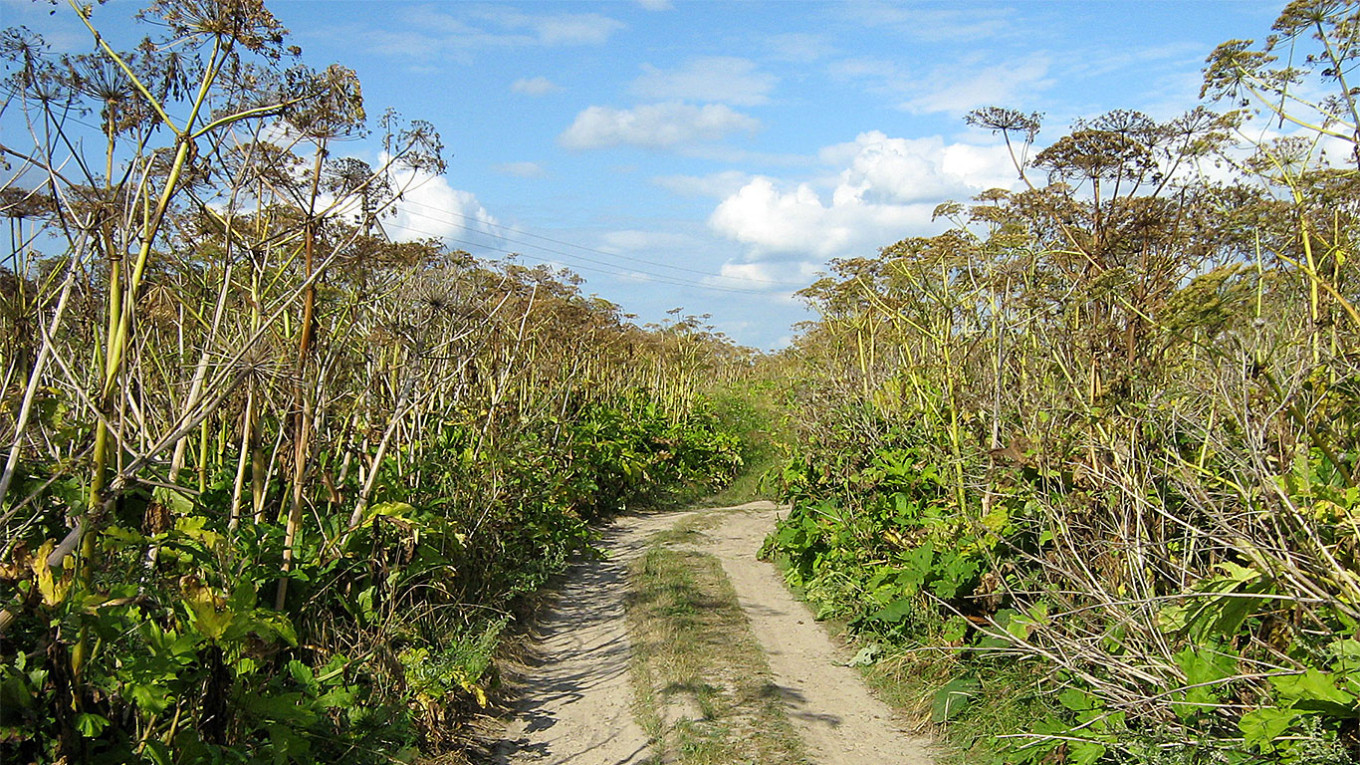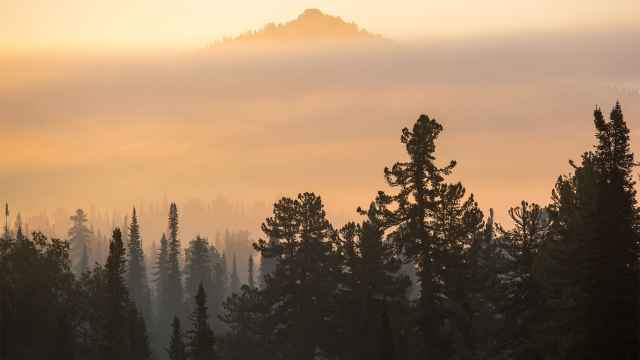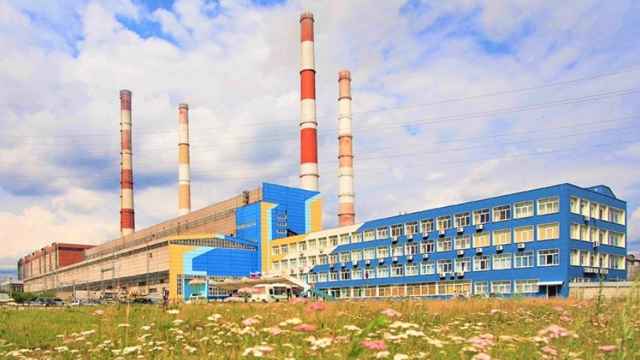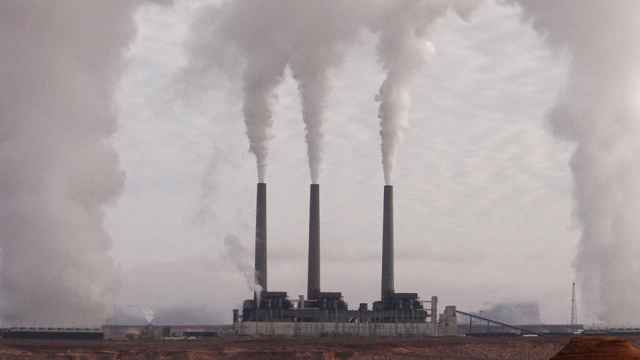For years, Russian landowners have watched a toxic, invasive plant species spread across their properties like wildfire and have been helpless to act.
Sosnovsky’s hogweed — a monstrous plant that can tower up to five meters in height — has spread unchecked across the country, wreaking havoc on ecosystems and landing thousands in the hospital every year.
“I was burned, even through a tarp storm jacket,” said biologist and forestry expert Alexei Yaroshenko, who once mowed hogweed on his property while wearing waterproof fabric.
“It was the hogweed sap that flew from the hand scythe [that caused my burns]. The burns were healing for six months,” Yaroshenko told The Moscow Times.
In a bid to combat the plant, Russian lawmakers in February preliminarily approved a bill imposing hefty fines on those who fail to clear it from their properties.
If passed into law, the “anti-hogweed bill” will force individuals to roll up their sleeves and clear this unyielding plant from their lands — but at their own risk.
Hogweed sap contains furanocoumarins, toxic compounds that can cause third-degree burns when exposed to sunlight as well as blindness. Severe burns covering over 80% of the body can be fatal.
Due to its high reproduction rate, with a single plant yielding from 20,000 to 100,000 seeds, hogweed currently dominates up to 15% of the natural landscapes of European Russia, some estimates suggest.
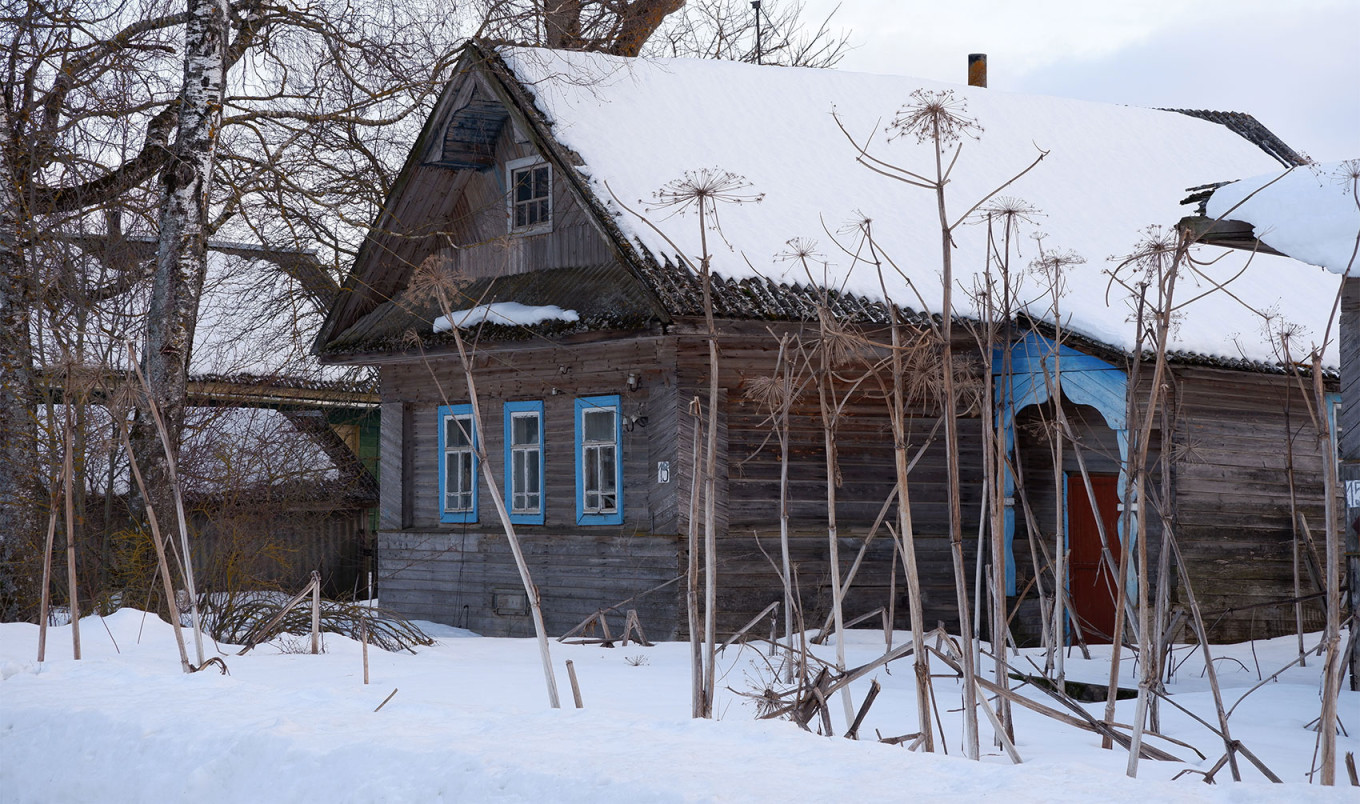
Yaroshenko estimated that hogweed thickets have spread across 1 million hectares in Russia — an area roughly equivalent to Cyprus or Lebanon.
As hogweed continues to take over Russia's roadsides, fields and dachas, experts question how effective the new law will be without systemic solutions.
The new law imposes fines of up to 50,000 rubles ($540) on individuals — about two-thirds of the average Russian salary in 2023 — and up to 700,000 rubles ($7,550) on legal entities for failing to eliminate the aggressive plant from their properties.
In practice, these fines are likely to be arbitrary, targeting whoever happens to get caught, Yaroshenko said.
“Right now, our government tends to address all problems with fines at best or imprisonment at worst,” he said.
“This approach is ineffective because it's impossible to fine everyone. Hogweed is growing practically everywhere now — on any farmer's or agricultural business’s land.”
Soviet experiments
Following Russian officials’ narrative of blaming the West for the nation's problems, State Duma deputy Timofei Bazhenov claimed without evidence in February that hogweed may be "part of the U.S. bacteriological warfare against Russia."
The real picture is closer to one of self-inflicted harm.
After World War II, Soviet scientists embarked on a quest to find new high-yielding foraging crops to feed livestock.
Sosnowsky's hogweed, distinguished by its cold resistance and phenomenal productivity, gained momentum and was deliberately brought from its natural habitat in the mountainous forests of the Caucasus to the center of the U.S.S.R., where it easily dominated the native low-lying grasses.
During the post-war famine, many Soviet regions embraced hogweed growth until concerns about its safety brought its cultivation to a halt. By that point, it was too late to stop hogweed’s relentless spread across the country.
These days, the plant is so ubiquitous that it has even permeated Russian pop culture, being featured in popular TV series, computer games and rock songs. One internet user prompted AI to generate images from the HBO series “The Last of Us” if it took place in Soviet Russia, with people getting infected with hogweed instead of cordyceps.
According to Yaroshenko, about 90% of hogweed tickets in Russia are found on abandoned agricultural lands — vast areas rendered unprofitable for cultivation after the Soviet collapse and Russia’s turn to a market economy.
While reforestation on those lands could help alleviate the hogweed problem, this is prohibited under current laws.
"This colossal seed productivity of hogweed is observed on open agricultural lands in full sunlight,” Yaroshenko said. “But under the canopy of a dense shady forest, hogweed’s growth is much more fragile."
Yaroshenko expects that many abandoned farmlands in Russia will not only remain unusable but expand with time as agricultural practices become more efficient — creating more fertile ground for hogweed’s conquest.
“Alternative forms of land use are needed. Allowing [people and businesses] to grow forests is one of the most effective ways because the forest serves as both an economic asset and a means of combating hogweed,” Yaroshenko said.
He added that current regulations, with multiple official checks and stringent reporting requirements, are crippling Russia’s farmers and small agricultural producers, which "practically cannot survive."
“There is no way that people will survive and thrive as regulations become more nightmarish,” Yaroshenko said. "This means that we will have a new wave of abandonment of agricultural lands.”
“Hogweed will say ‘thank you’."
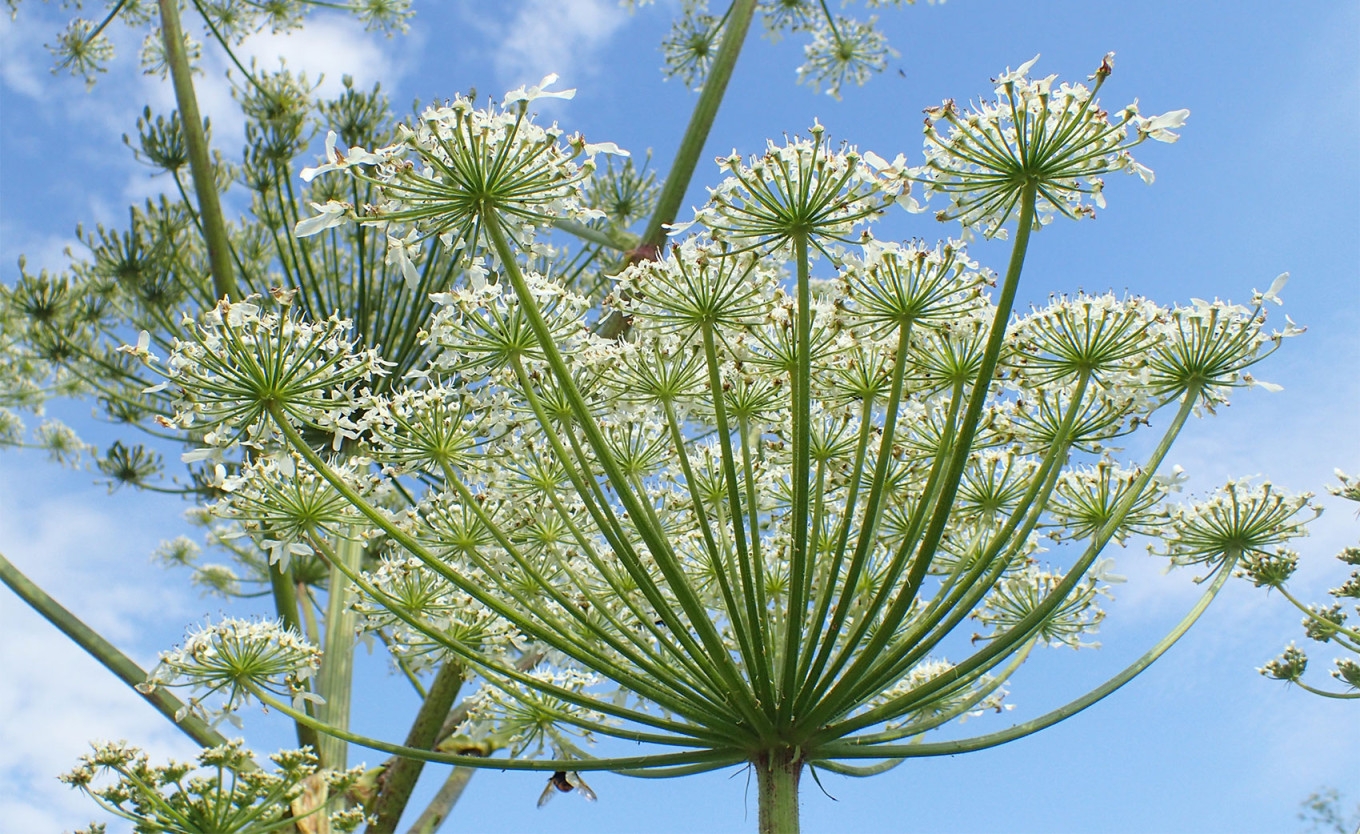
A silent disaster
Once it takes over a particular area, hogweed effectively displaces local species, significantly threatening biodiversity.
As the ecological consequences of the plant’s proliferation are often not immediately apparent, activist groups refer to it as a "slowly unfolding environmental catastrophe." By the time a dacha owner suspects something is wrong on their property, millions of hogweed seeds have already permeated the soil.
As Russians continue to abandon small villages in favor of cities, which are now home to three-quarters of the country’s population, there might be even fewer people on the ground to battle the plant’s spread in the future.
The Anti-Hogweed grassroots group, a collective of thousands of hogweed fighters from across Russia, equips individuals with strategies for eliminating the plant from affected lands and preserving still-untouched areas.
Clamping down on hogweed remains challenging because of the common practice of focusing on thickets while neglecting areas where individual plants are growing, a representative of the Anti-Hogweed grassroots group told The Moscow Times.
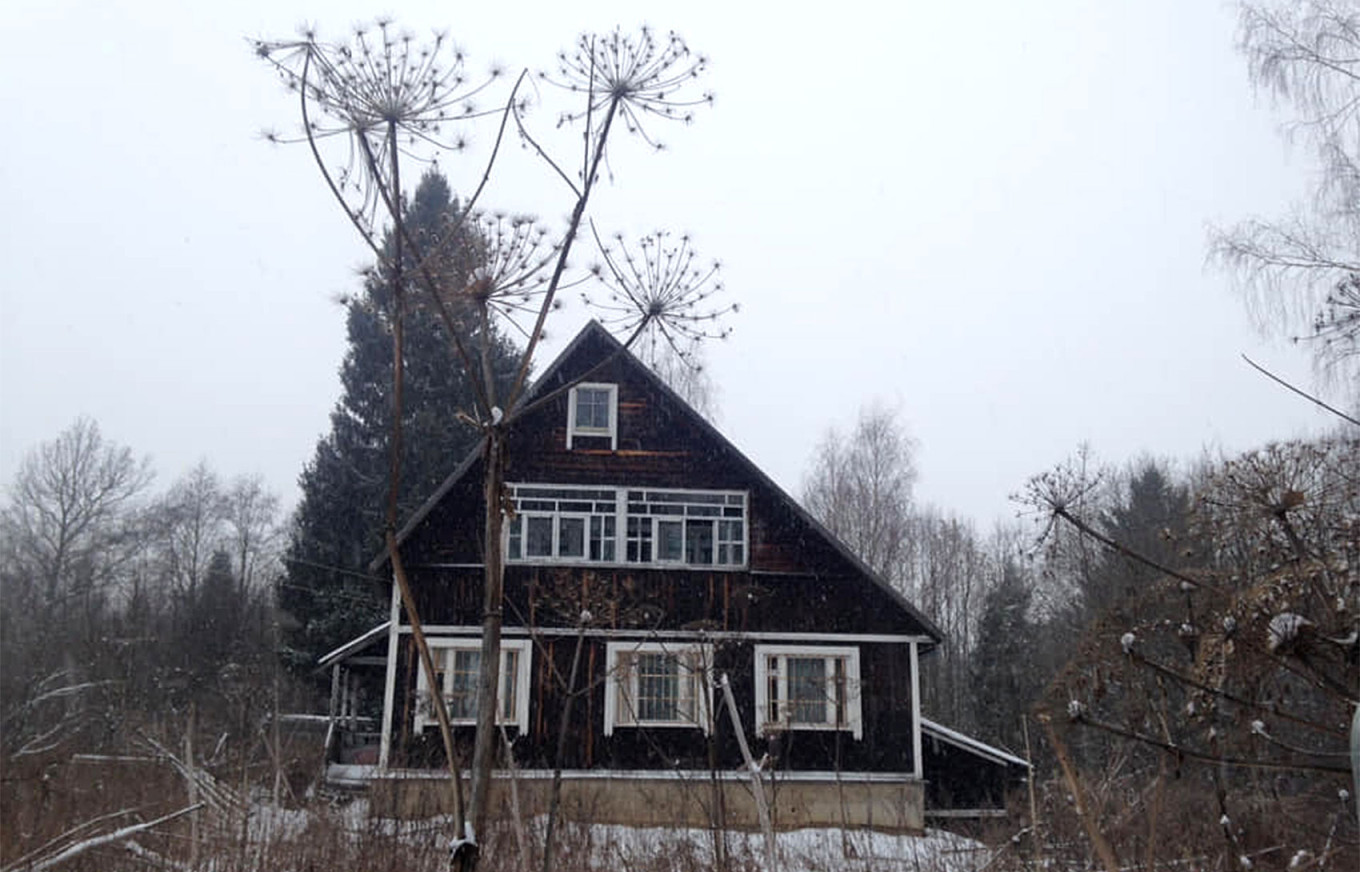
Many also struggle to distinguish hogweed from other species or lack knowledge of its threats to nature, a representative for the group said, requesting anonymity due to the risks of speaking to foreign media.
Along with activists’ efforts, there’s a need for a government-led awareness campaign similar to those during the peak of the Covid-19 pandemic, the representative said.
"[Something] like 'wear masks, wash hands,' so that it would resonate from all directions."
According to the Earth Touches Me environmental project, combating invasive species like hogweed requires a comprehensive state program, substantial funding and public awareness efforts.
Otherwise, eradicating hogweed will remain an uphill battle that will only worsen with climate change.
Skoltech researchers warned in 2022 that the planet’s warming would enable Sosnovsky’s hogweed to expand its habitat, potentially engulfing almost all of European Russia by 2050.
The plant has already been spotted beyond the Arctic Circle on the Yamal Peninsula, raising concerns for traditional indigenous livelihoods.
Having seen hogweed with his own eyes in Russia’s northern Arkhangelsk region several years ago, Yaroshenko said he believes the plant will spread even further as the planet continues to warm.
Amid the high costs and complexity of combating the invasive plant, he warned that the hogweed problem will require more attention than merely imposing fines.
“If there are no serious additional support measures from the state, the issue will not be resolved.”
A Message from The Moscow Times:
Dear readers,
We are facing unprecedented challenges. Russia's Prosecutor General's Office has designated The Moscow Times as an "undesirable" organization, criminalizing our work and putting our staff at risk of prosecution. This follows our earlier unjust labeling as a "foreign agent."
These actions are direct attempts to silence independent journalism in Russia. The authorities claim our work "discredits the decisions of the Russian leadership." We see things differently: we strive to provide accurate, unbiased reporting on Russia.
We, the journalists of The Moscow Times, refuse to be silenced. But to continue our work, we need your help.
Your support, no matter how small, makes a world of difference. If you can, please support us monthly starting from just $2. It's quick to set up, and every contribution makes a significant impact.
By supporting The Moscow Times, you're defending open, independent journalism in the face of repression. Thank you for standing with us.
Remind me later.


